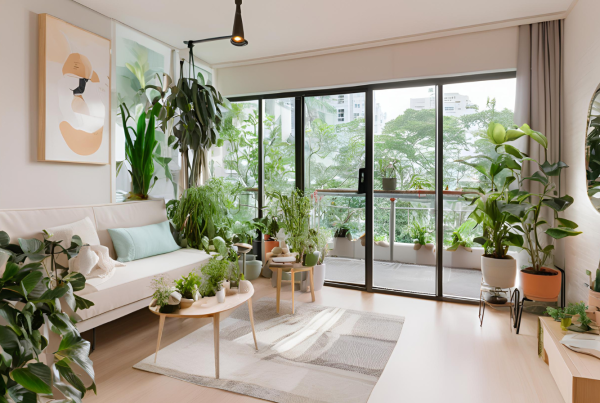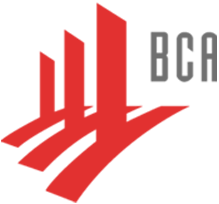Insights into landed property renovations in Singapore reveal some notable trends. There’s a growing demand for renovations in landed properties, possibly fueled by factors such as the aging of existing properties, rising property values, and evolving lifestyle preferences. Moreover, there’s a noticeable shift towards renovations and Additions & Alterations (A&A) projects compared to complete rebuilds. This trend may be influenced by considerations like cost-effectiveness, shorter turnaround times, and the desire to preserve the original character of the property.
Unravel the complexities of time and expenditure when embarking on the journey to rejuvenate your Landed Property in Singapore! The greater the perceived spaciousness of your living space, the higher the potential value of your home. Effective interior design for your landed property can enhance brightness and airiness, creating the illusion of more space. Employing day curtains to invite natural light, strategically placing mirrors to reflect and distribute light, and adopting a minimalist approach with thoughtful space management can all contribute to a clutter-free and expansive appearance.
Additionally, the condition of your bathroom, kitchen, and yard plays a significant role in the assessment of potential buyers. A straightforward interior upgrade for your kitchen and bathroom in your landed property can yield a well-maintained and appealing look. This can involve updating faucets and plumbing, and incorporating energy-efficient and modern appliances, resulting in a luxurious and contemporary ambiance. Transforming your yard into a cozy haven with natural materials and attractive landscaping can likewise bolster the overall value of your property.
Be confident that our all-encompassing guide is your trusted companion, dedicated to enhancing your planning endeavors by meticulously breaking down the costs and equipping you with invaluable development knowledge:
Unveiling the Diversity of Landed Properties
Landed properties showcase an array of shapes, sizes, colors, and heights. Yet, they can be neatly categorized into four primary classes: Good Class Bungalow (GCB), Detached Houses, Semi-Detached Houses, and Terrace Houses.
Good Class Bungalow (GCB): GCBs represent the pinnacle of luxury in Singapore’s property landscape. Nestled within the designated GCBA, as defined in the URA Master Plan, GCBs typically boast a sprawling land size of no less than 1,400 m² (approximately 15,070 ft²), with a minimum plot width of 18.5m and a depth of 30m. However, it’s worth noting that some GCB lands may not meet these minimum requirements.
Detached Houses: Known as Bungalows in the URA Master Plan, detached houses must feature a minimum land size of 400 m² or 4,306 ft², along with a minimum width of 10m. Unlike GCBs, detached houses can be found in various parts of Singapore beyond the GCB area.
Semi-Detached Houses: Semi-detached houses, or Semi-D for short, are properties that share a boundary with another landed property. Typically attached at the sides, they can also be back-to-back. Semi-detached houses and corner terraces require a land size of at least 200 m² or 2,153 ft², with a minimum plot width of 8m.
Terrace Houses: Terrace houses are part of a row of at least three houses that share a common party and boundary walls. These houses usually occupy a land size of approximately 150 m², equivalent to 1,615 ft².

Exploring Renovation Options for Your Landed Property
If you seek a transformation for your landed private property, you have three distinctive options to consider: (a) New Erection or Rebuild, (b) Reconstruction, and (c) Additions and Alterations. These options vary in the extent of changes they bring to your property.
- New Erection or Rebuild: This involves demolishing the existing structure and the construction of an entirely new building. It’s a popular choice among homeowners looking to enhance their property value.
- For instance, consider a home on Jalan Lengkok. The estimated construction cost for rebuilding it into a 3.5-storey structure ranges from approximately S$1.3 million to S$1.6 million, with interior design costs estimated at 300K to 450K.
- Reconstruction: This option involves altering existing structures, and elevations, or increasing the gross floor area (GFA) by over 50%.
- For example, a house on Jalan Lengkok with ample space may opt for the addition of an extra storey, which could cost between S$900,000 to S$1.3 million.
- Additions and Alterations: Unlike reconstruction, this choice brings about changes that are less than 50% of the existing structure, GFA, or elevation.
- Simply increasing GFA by around 50% could cost between S$600,000 to S$800,000.
Additions & Alterations (A&A) entail minor adjustments to an existing landed house, while reconstruction involves proposing the replacement of a substantial portion of the house. This replacement surpasses 50% in any of the following aspects:
- Gross floor area – The newly added gross floor area compared to the existing one.
- External walls – Removing and replacing existing external walls or constructing new ones.
- Structural elements such as columns, beams, and slabs – Replacing existing ones or constructing new ones.
Additionally, the following modifications are considered reconstruction regardless of whether they exceed 50% of the existing building:
- Increase in storey height – Alterations involving an additional storey in the roof. However, if the roof alterations don’t include an additional storey, they may qualify as Additions & Alterations (A&A).
- Change in housing form – Alterations that result in a change to the landed dwelling’s housing form, such as from a semi-detached house to a detached one.

Beyond Construction & Renovation: A Look at Other Costs
Aside from construction costs, several other essential expenses come into play. These typically fall into six categories:
a. Submission (S$80,000-120,000): This encompasses consultant fees (such as Architect and Professional Engineer), soil investigation, topographical surveys, plan processing fees, and connection of services fees to various authorities.
b. Mechanical & Electrical Services (M&E): These services encompass electrical (S$30,000-80,000), plumbing (S$25,000-45,000), air-conditioning (S$20,000-40,000), and relocation of sewer lines and manholes if required (S$80,000-120,000), among others.
c. Structural and Building Elements: Structure elements like columns, beams, and floor slabs, as well as building elements like windows, doors, glasswork, painting, and labor, come into play, with costs ranging from S$200-250 and S$160-190 per square foot, respectively. The installation of a passenger lift, depending on type and height, may cost an additional S$60,000-125,000.
d. Materials: Expenses for materials such as marble, homogenous tiles, parquet, and timber typically fall between S$150,000-300,000.
e. Interior Design: This category covers carpentry, feature walls, kitchen cabinetry, wardrobe design, and overall interior aesthetics, usually ranging from S$180,000-300,000.
f. Essential Materials: These include hardware, lighting, furniture, curtains, and other interior elements, with costs subject to their place of origin.

Navigating Approvals & Submissions
Before embarking on any renovation work, it’s essential to determine whether authority approval is necessary for your specific project.
While most construction projects, excluding interior renovations, require approval from authorities, interior renovations involving structural changes or GFA increases also necessitate approval.
It’s crucial to familiarize yourself with URA’s envelope control guidelines, which guide the redevelopment of landed houses by regulating allowable building massing based on permissible building envelopes.
Whether inside or outside your house, some works may not require authority submission, while others do. Additionally, you should explore URA’s regulations for safeguarded landed housing estate zones, which dictate permissible housing types and building heights.
Aside from URA’s approval, various other authorities have their unique requirements. For example, you must identify the Line of Road Reserves, as certain areas are safeguarded by the Land Transport Authority (LTA) for future road construction or improvements. Ensuring your new development does not encroach into these reserve lands is crucial.
Moreover, detailed and special plans must be submitted to BCA for approval. While many works require BCA approval, there is a list of exemptions, such as doors, windows, and specific structural modifications.
Additionally, conducting a topographical survey to establish accurate land boundaries, as well as soil investigation to assess soil suitability for construction, are essential steps. When extending the main entrance, approvals from LTA, NParks, and PUB may also be necessary.

Renovation Mistakes to Avoid in Your Singapore Landed Home Renovation
When embarking on a renovation journey for your newly purchased landed property in Singapore, it’s important to avoid common mistakes that can lead to challenges and dissatisfaction. Here are some key points to keep in mind:
Neglecting Exterior Areas
Overlooking the exterior areas of your home can be a common oversight during a renovation project. While interior design is crucial, the front porch, side of the house, and backyard also play a significant role in enhancing your property’s overall curb appeal. It’s important not to neglect these spaces. To make the most of them, you can consider various improvements such as adding a shade-providing roof, updating seating arrangements, incorporating swings, improving ventilation, and choosing wall colors that complement the exterior, all of which can contribute to a more inviting and appealing exterior design.
Planning Space Properly
Effective space planning is a critical aspect of any renovation project, particularly when it comes to appliances like refrigerators, ovens, and kitchen stoves, which have precise measurements and designated placements. It’s essential to meticulously plan the use of space, considering the dimensions of these appliances. By ensuring that you have accurate measurements and a well-thought-out layout before commencing the renovation, you can prevent the need for costly adjustments and alterations down the line. Proper planning contributes to a more efficient and functional design for your home.
Choosing Materials Wisely
Careful consideration of materials is pivotal in the realm of landed house interior design. Making informed choices in material selection is paramount as the wrong materials can result in durability problems, escalated maintenance expenses, and a compromised aesthetic. It is vital to ensure that the materials you opt for align seamlessly with your design objectives and long-term considerations. By selecting materials wisely, you can achieve a design that not only looks appealing but also stands the test of time, reducing the need for frequent repairs and replacements.
Embracing Variety in Contractor Estimates
Embracing diversity in contractor estimates is a prudent approach when undertaking a renovation project. To make an informed decision, it’s advisable to collect estimates from various reputable contractors. While the temptation to opt for the lowest-priced option may be strong, it’s essential to remember that quality and essential features should not be compromised. Instead of fixating on the lowest bid, focus on identifying common quotations among contractors and conduct comprehensive research. This approach ensures that you choose a contractor who not only offers a competitive price but also meets your quality and service expectations, resulting in a successful renovation outcome.
Avoiding Excessive Customization
Balancing personalization with a harmonious design is key when renovating your home. While it’s important to infuse your preferences into your living space, it’s equally crucial to avoid excessive customization that can result in cluttered and overwhelming design decisions. Collaborating with a professional can be invaluable in striking this balance. They can provide guidance and expertise to ensure that your customization aligns seamlessly with the overall design, creating a cohesive and aesthetically pleasing result. This approach enables you to enjoy a personalized living environment without compromising on visual appeal and functionality.
By avoiding these common renovation mistakes, you can ensure a smoother and more successful renovation journey, resulting in a beautiful and functional landed property in Singapore.
When contemplating renovations for your landed property, it’s imperative to engage experienced professionals familiar with the unique challenges and opportunities inherent in these projects. Thorough research and obtaining multiple quotes are essential steps to ensure a successful outcome for your landed home renovation endeavors.
Working with KWYM Interior Designs for your Landed Property
Are you currently in the process of acquiring a Landed Property and contemplating construction work? Are you curious about the budget requirements and the pertinent rules and regulations that demand your attention?
Landed construction is far from being a simple task akin to stacking Lego blocks. It demands meticulous attention to detail and necessitates the involvement of a seasoned professional.
KWYM Interior Designs is proudly certified under the General Builder Class 2 License, enabling us to undertake Rebuilding, Reconstruction, and Additions and alterations projects.
Don’t hesitate to reach out to us for a FREE on-site survey of the Landed Property you have your sights set on.







